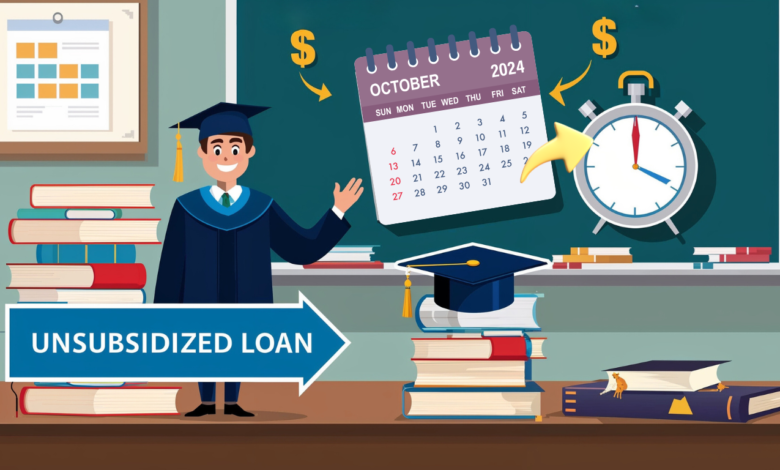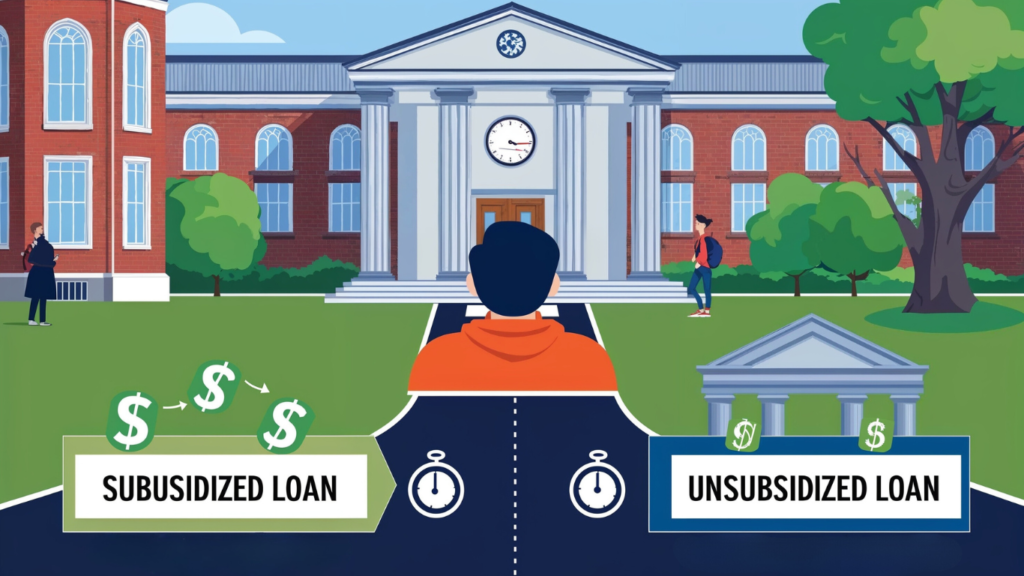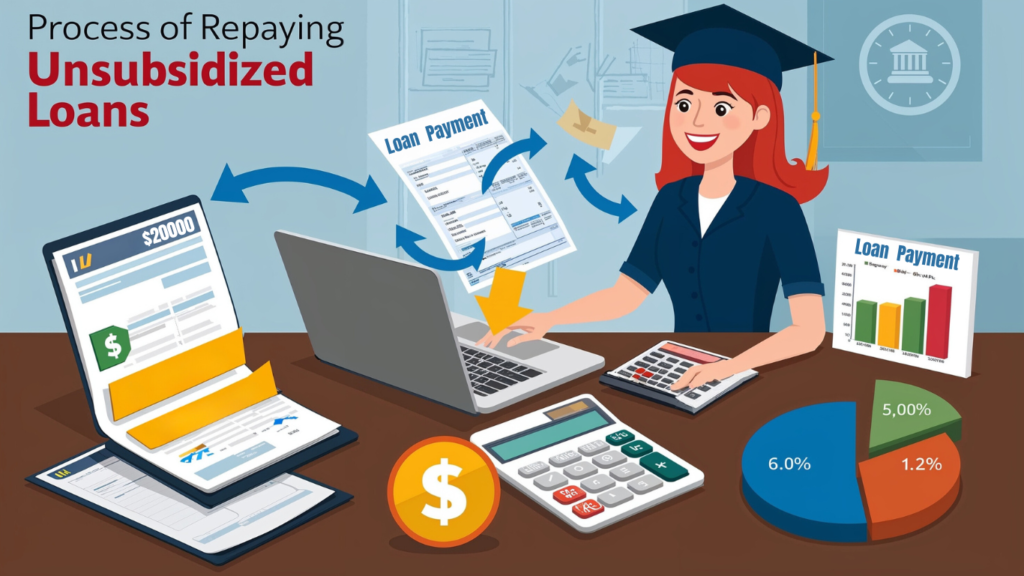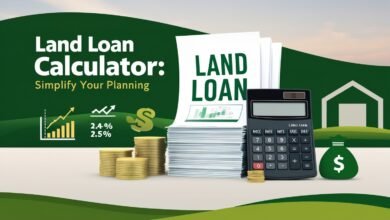What is an Unsubsidized Loan

What is an Unsubsidized Loan? A Must-Read for Students and Borrowers
An unsubsidized loan is a federal student loan that accrues interest from disbursement, making it important to understand repayment and interest options.
Introduction:
One of the biggest steps that many students and families struggle with is securing funds for higher education. A major part of this search for student financial aid involves the use and understanding of terms such as “unsubsidized loan” when it comes to loans used in repayment during or after undergraduate school. In this post, we cover the basics of unsubsidized loans — what makes them different from subsidized loans, some key features you should know about if they are an option for paying for college and things most borrowers should be aware of before taking one.
Unsubsidized Loan Overview:
- An unsubsidized loan is a federal student loan for which interest begins accruing as soon as the money comes out, no matter whether or not you’re in school; while an undergraduate student (or during any deferment), take advantage of federal subsidized loans first. Borrowers of unsubsidized loans (where the federal government does not pay interest) are responsible for a lifetime’s worth of the cost.
- Federal unsubsidized loans are available to both undergraduate and graduate students, regardless of their financial need. Thus, a wider range of students requiring additional funds to help with the cost of education can take on unsubsidized loans.
Unsubsidized Loan Characteristics:
- Accrue Interest from Day 1:
If you have an unsubsidized loan, one of the distinguishing features is that interest begins to accrue immediately upon disbursement. This means that the interest is added to your principal even when you are in school and do not need to pay. And this interest can be capitalized and increase the principle amount if unpaid, leading to an increasing total repayment. - No Financial Need Necessary:
Unlike subsidized loans, unsubsidized student loans are not based on financial need. This opens the loans to more students—even those from higher-income families. It is particularly helpful for students who do not have enough family needs to qualify for other forms of financial aid but still require a small amount of money on top of the cost of their education. - For Undergraduate and Graduate Students:
Unsubsidized loans are available to all undergraduate and graduate students. Graduate students can also take unsubsidized loans to pay for graduate or professional school. Unsubsidized loans are vital to those pursuing master’s degrees, doctorates or professional programs where educational costs can be dramatically higher. - The amount of money you can borrow changes depending on what year of school you’re in:
Unsubsidized loans have annual and aggregate loan limits as determined by the federal government in any given year for which a student applies. These limits are based on a student’s year in school and dependency status. Borrowing limits are typically higher for independent and graduate students than for dependent undergraduate students.
What Makes Unsubsidized Loans Different from Subsidized Loans:
- Interest Coverage:
The key difference between unsubsidized and subsidized loans is how interest works. The federal government pays the interest while a student is in school at least half-time, for six months after leaving school (a grace period), and during periods of deferment. Unsubsidized: Interest accrues during school or deferment, but the borrower is responsible for all interest. - Interest Accumulation During School:
Firstly, subsidized loans are accessible to students with financial difficulties. The determination of economic necessity is allocated following the Free Application for Federal Student Aid. In contrast, those students who cannot demonstrate a legally appointed level of financial burden will not qualify. Interest accrues during all periods for all unsubsidized loans. Acquiring the interest on total periods will further influence the amount you will eventually have to discharge. Moreover, interest accrues while you are enrolled, and the general unpaid interest will grow even higher. To compute the whole amount, the school loan officer may charge the entire amount. - What Happened with Capitalized Interest:
It is important to note that capitalized interest might increase your student loan repayment amount overall, so some borrowers opt for an interest-only payment while they are in school or during deferment. If you can afford to pay the interest now, doing so will save you a bundle later—even if your lender doesn’t require full payment until after graduation.
Which One Is Better: Subsidized Loan or Unsubsidized Loan?
- When choosing between a subsidized loan and an unsubsidized loan, the right option often depends on a student’s financial situation and long-term plans. Generally, a subsidized loan is considered the better choice if a student qualifies because it saves money on interest. With a subsidized loan, the federal government covers the interest while the borrower is enrolled at least half-time, during the grace period, and during any deferment.
- This helps keep the overall debt lower and more manageable after graduation. However, subsidized loans are need-based and have borrowing limits, which means some students might not qualify or may need additional funds beyond what is offered. Unsubsidized loans, on the other hand, are available to a wider range of students and have higher borrowing limits.
- They can be particularly advantageous for those who may not demonstrate financial need but still require funding for educational costs. While the interest on unsubsidized loans starts accruing immediately, they offer more flexibility in accessing the funds. Ultimately, if a student is eligible for both, starting with a subsidized loan and then supplementing with an unsubsidized loan can provide the best balance between cost savings and financial support.

Is an Unsubsidized Loan the Right Choice for You?
Pros of Unsubsidized Loans:
- No demonstrated need:
Since unsubsidized loans don’t require financial need to qualify, they can work for students who fall outside of the assistance parameters based on their FAFSA audit. - Larger Borrowing Limits:
They allow you to borrow more than subsidized loans, making them important for grad school. - Use for various educational expenses:
Unsubsidized loan funds can be used to pay for tuition, room and board, books and supplies.
Cons of Unsubsidized Loans:
- Interest Accrual During All Periods: This is what makes them very costlier with time since the total payoff of the loan can also increase excessively over a period.
- High Debt Load: Paying interest the whole time while being able to borrow a lot can equal big debt when you graduate.
Steps for Repaying Unsubsidized Loans:
- Start Paying Interest Early:
By paying the interest even before leaving school, it can avoid causing capitalization to your debt which in turn will keep you from borrowing more. Anything, including repayments of even trivial amounts, can really help bring down the total repayment amount. - Choose To Refinance or Consolidate Loans:
Consolidation can make it easier for those with more than one federal loan to repay by compiling all the loans into a single monthly payment. On the other hand, if you refinance with a private lender, your interest rate may decrease, but you could also lose future access to federal loan benefits such as income-driven repayment plans. - Explore Repayment Plans:
1. For one thing, the federal government has many ways to pay back the unsubsidized loan!
2. Standard Repayment Plan—Fixed monthly payments over 10 years.
3. Payments are based on your income and family size, which can lower monthly payments and extend the repayment period.
4. Graduated Repayment Plan, where payments are low when they begin and increase over time.

Conclusion:
Many students can access unsubsidized loans to help pay for school, including by providing them with more flexibility than grants do and not requiring financial need as part of the qualification. Still, that they begin accruing interest from day one means borrowers should be aware of the expense and develop a repayment strategy. Students should know how interest accumulates, what they can afford to pay each month and which repayment option is best for them — all ways that unsubsidized loans’ lifelong loan sentences won’t wreak too much havoc on their financial futures.
FAQs:
- Nearly as unusual is what the interest rate on an unsubsidized loan might be?
Federal unsubsidized loan interest rates: These are types of student loans whose interest rates the government sets each year. Individual borrowers’ rates depend on whether they’re undergraduates, graduates, or parents. - Are unsubsidized loans able to be paid off early?
True — Federal unsubsidized loans do not charge a prepayment penalty; you can pay your loan off early to save on interest. - Do You Have To Pay Interest On An Unsubsidized Loan While In School?
On the back burner: You will not have to make payments on your loan while you are in school, but paying down that interest can help lower your overall cost obligations later. - Is there a grace period for unsubsidized loans?
Yes, after leaving school, you typically have a six-month grace period before repayment begins. However, interest continues to accrue during this time. - How does an unsubsidized loan affect my credit?
If you make timely payments on an unsubsidized loan, your credit score can be positively affected, but missed payments can harm it. - Can I switch from an unsubsidized loan to a subsidized loan?
No, you cannot convert an unsubsidized loan into a subsidized loan. However, you may be eligible to apply for a new subsidized loan if you meet the financial need criteria.




